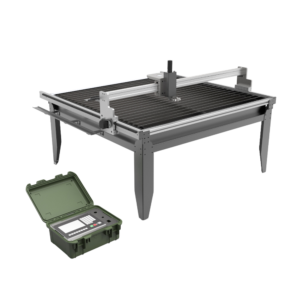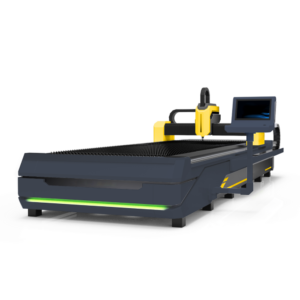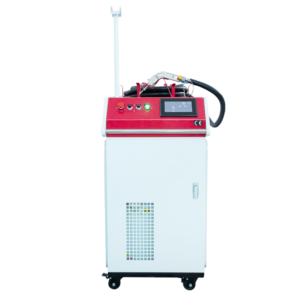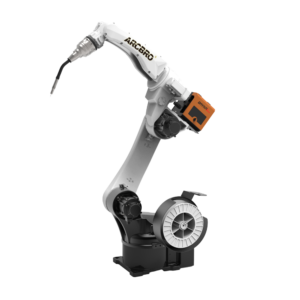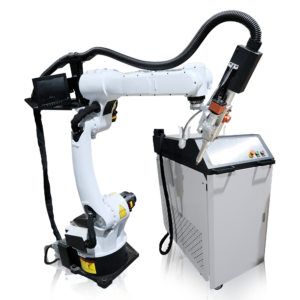We want to go over how and when to change out your consumables. Having a general idea of the impact consumable life has on your cut quality will also help you reduce scrap material and spend less time in the secondary processing of your finished parts.
There are 5 parts within most conventional plasma torches that are considered consumable items. They consist of: a swirl ring, an electrode, a nozzle, a retaining cap, and a shield cap. Each of these consumables has an expected life that is based on either the number of pierces or the hours used.
A lot of our customers that are unfamiliar with the plasma cutting process will want to know:
1. How long do these consumables last?
There are a ton of factors in plasma cutting that can shorten the life of your consumables. As a general rule of thumb, you’ll want to ensure that you aren’t cutting
- Too fast
- Too slow
- Too high
- Or too low
Book values from your plasma cutter will get you off to a good start, but an evaluation of your cut quality will warrant some fine tuning of the height control parameters.
Cutting too fast – won’t allow the plasma to fully pierce the material, which could result in a splash back of molten slag back into the torch consumables. This would prevent the torch from sensing the material properly and accelerate the deterioration of the nozzle. The resulting cut will have a large degree of positive bevel, where the top is wider than the bottom.
Cutting too slow – eats away the material faster, which forces the plasma to seek for metal in different directions in search of a ground to complete the circuit. The behavior of the plasma will begin to go outside of its normal direction, expanding the diameter of the nozzle orifice. In some cases you’ll be able to see this favoritism of direction on the nozzle orifice itself.
Cutting too high – will have the same impact on the nozzle orifice as cutting too slow. It won’t be close enough to the material to complete the circuit, therefore it will look for alternative routes, most of which will go back through the torch itself.
Cutting too low – will put the torch at a higher risk for collision, in which physical damage to the torch would also shorten the life of the consumable. You’ll also see a large amount of dross on the backside of your finished parts.
2. What are some of the signs that you can look for before needing a consumable change?
It’s all about the cut quality. Excessive dross accumulation on backside of your parts, as well as abnormally high degrees of bevel angle, can be the two biggest indicators that the consumables within your torch need to be replaced. You can also look at the consumables themselves to know whether they are nearing the end of their life cycle. The number one thing that our customers mistake as a sign for a warn consumable is the color. The pristineness of the copper does not have any impact on cut quality.
The nozzle is the most frequently replaced consumable. You’ll find an excessive amount of both dross and bevel angle appearing in your cuts. On the nozzle itself you’ll find that a larger orifice and an irregularly shaped hole will be the telltale signs of excessive wear.
For the Electrode, you’ll want to pay close attention to the amount of Hafnium left in the tip. The larger the crater within the electrode tip, the more wear that the electrode has gone through. You’ll also be able to notice darker swirl marks near the tip of the electrode. Although these swirl marks don’t have a correlation with the life of the electrode, they do indicate contaminants within your air supply.
For the shield cap, you’ll want to hold it up to a light and check if any of the holes are plugged. If they are, you’ll want to change it out. These holes are the outlet for the shield gas, and when clogged, they can misshape the plasma arc which leads to imprecise cuts.
3. Which consumables need to be changed out most often?
The nozzle and the electrode will need to be changed out most often. The rest of the consumables will have infrequent durations between change outs. The swirl ring will need to be checked intermittently for clogs or cracks. Your retaining cap is the most durable of the consumables, and will only need to be replaced when corrosion, clogging, or cracking are physically apparent.
4. How do I install the consumable stack?
The consumable stack will not be able to be placed back into the torch without a proper assembly and install. For most plasma cutters the order will be:
- Shield Cap
- Retaining Cap
- Nozzle
- Electrode
- Swirl Ring
5. Which consumables do I alternate when changing my operating amperage?
This will be different for some plasma cutter manufacturers, but you will be able to read on the side of the consumable which amperage it has been designed for, either through a correlating part number, or by the actual amperage scribed on the side. The nozzle is most commonly designed in increments of 20 amps. (visual of 45, 65, 85, 105, 125)
6. What happens when you mismatch your operating amperage with your consumables?
Operating at higher amperages in consumables that are graded for lower amperages, like turning you plasma cutter up to 60 amps with 40 amp consumables in your torch, will result in a faster dilation of the nozzle orifice and a poor cut quality. Conversely, installing larger amperage plasma consumables at a smaller operating amperage, like operating at 40 amps with 60 amp consumables, will result in excessive dross accumulation and high degrees of bevel.
In conclusion, we highly stress the importance of tracking consumable wear and installing them properly. It can have a direct impact on the cut quality that is being achieved on your table. For any questions about our machines and how to operate them, feel free to give us a call at 775-673-2200.












